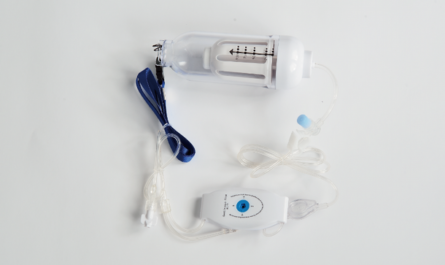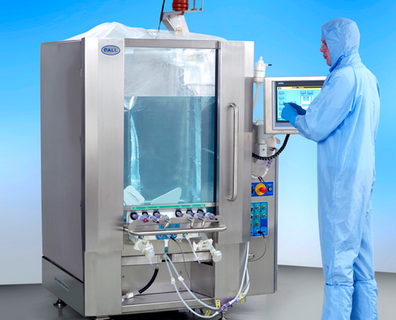
Insulin Lispro: A Fast-Acting Insulin Analogue
Introduction
Insulin, a hormone naturally produced by the pancreas, is essential for regulating blood glucose levels in the body. For people living with diabetes, administering insulin through injections is often required to keep blood sugar under control. However, regular insulin, which has been used for decades, can take several hours after injection to reach its peak effect. This delay makes it difficult for users to match the insulin injection with food intake and activity levels throughout the day. A new generation of insulin analogues was developed to better mimic the body’s natural insulin action curve. One of the earliest analogues introduced was insulin lispro.
What is Insulin Lispro?
Insulin lispro, sold under the brand name Humalog, is a fast-acting insulin analogue developed by Eli Lilly and Company. It differs from regular human insulin by the reversal of the amino acids proline and lysine at positions B28 and B29 on the insulin protein chain. This minor alteration causes insulin lispro to be absorbed into the bloodstream much faster than regular human insulin. Specifically, insulin lispro reaches its peak effect in 0.5-1 hour compared to 2-4 hours for regular human insulin. This quicker onset and peak allows for more precise timing of insulin administration in relation to meals or planned physical activities.
Clinical Studies on Efficacy and Safety
Numerous clinical trials have been conducted comparing insulin lispro to regular human insulin in both type 1 and type 2 diabetes patients. Findings consistently show that insulin lispro provides significantly better postprandial (after meals) blood glucose control. One landmark study randomized over 500 patients to receive insulin lispro or regular human insulin with meals for 6 months. Researchers found that those on insulin lispro had lower two-hour postprandial glucose levels and reduced hemoglobin A1c (HbA1c), indicating better long-term glycemic control. Similar efficacy benefits were demonstrated across diverse populations including children, the elderly, and pregnant women with gestational diabetes.
Safety profiles between insulin lispro and regular human insulin were also found to be comparable. No clinically meaningful differences were seen in minor hypoglycemic events. Subsequent studies over decades of use have further reinforced the favorable safety record of insulin lispro. It is now one of the most commonly prescribed insulin types worldwide. The convenient pharmacokinetic properties allow patients greater flexibility in meal timing and carbohydrate counting without compromising glucose control.
Delivery Forms and Combination Products
Insulin lispro is available in regular cartridge/penfill vials for use with syringes or insulin pens. These offer simple needle delivery of the insulin dose. More advanced delivery systems include prefilled insulin pens that make administration even more convenient. For example, the SoloSTAR pen is a single-patient-use disposable pen that holds 300 units of insulin lispro. Users simply select the dose, press the button, and receive the full injection rather than multiple injections from a vial.
Combination products are also available to simplify treatment regimens. For instance, Humalog Mix contains insulin lispro combined with long-acting insulin glargine in a fixed ratio. It provides both mealtime coverage with lispro as well as basal insulin support from the glargine component with just one daily injection. Other popular premixed options pair lispro with intermediate-acting NPH insulin in variable ratios depending on the product. These combination formulations help synchronize short- and long-term insulin needs with a minimal number of injections.
Expanded Usage Beyond Type 1 and 2 Diabetes
Beyond controlling blood glucose in type 1 and type 2 diabetes, insulin lispro has found utility across various diabetes-related conditions. It is now commonly used to treat gestational diabetes during pregnancy. The rapid onset matches well with the immediate post-meal insulin requirement of pregnant women to protect both maternal and fetal health. Insulin lispro is also prescribed to manage hyperglycemia in hospitalized patients and during procedures under general anesthesia due to its quicker correction of elevated blood sugar levels. Pediatric patients also transition well to this rapid-acting analogue compared to regular human insulin formulations. Combined convenience and efficacy advantages make insulin lispro an important therapeutic option for diverse diabetes populations.
Conclusion
Ever since its introduction over two decades ago, insulin lispro has revolutionized the management of postprandial hyperglycemia through its accelerated pharmacokinetic properties. Numerous clinical trials have demonstrated improved glycemic control and comparable safety to regular insulin in a wide range of patients. Various delivery mechanisms and fixed-ratio combination products now provide simple options for optimizing both mealtime and basal insulin supplementation. Continued worldwide adoption confirms the clinical utility and favorable benefit-risk profile of this innovative insulin analogue. With ongoing refinements in formulation design, insulin lispro remains essential for achieving glycemic targets and maintaining a high quality of life in patients living with diabetes.
*Note:
- Source: Coherent Market Insights, Public sources, Desk research
- We have leveraged AI tools to mine information and compile it



